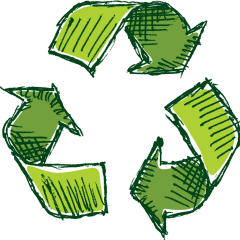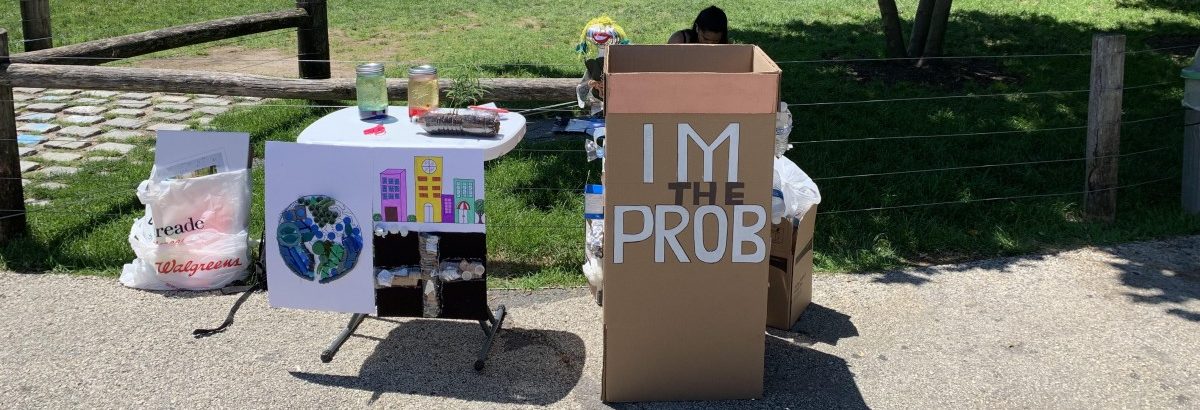RECYCLING
ERIC ABREU
IXCHEL GOMEZ
JOHNSON NOEL
Joe Truini. “Study highlights high cost of NYC recycling program”. Waste
News, February 16, 2004, Monday.
https://advance-lexis-com.citytech.ezproxy.cuny.edu/api/document?collection=news&id=urn:contentI
tem:4BRB-CPJ0-00S0-J1K9-00000-00&context=1516831. Accessed June 29, 2019.
The main idea of this article is about the cost of recycling and how cost effective it is as time goes by.
The article claims that recycling is more expensive that disposal and likely will continue to be so. A
spokesman for Mayor Bloomberg at the time said that they were trying to create ways to make recycling
as cost effective as possible but the idea that recycling saves money is a myth. At the time the estimated
cost per ton of managing the city’s trash was $257 in 2002 compared to $291 to recycle. Since sanitation
trucks pick up more trash than recyclables, it’s much more expensive and time consuming to sort
through the trash to find recyclable objects. In 2002 the Sanitation department collected 3.1 million tons
of trash and 796,511 tons of recyclables. This is related to our performance because we were focused on
recycling by reusing and creating art. Also by people becoming more involved with recycling, we can cut
down the cost it takes the city to recycle.
Lipton, Eric. “Report Calls Recycling Costlier Than Dumping.” The New York Times, The New York
Times, 2 Feb. 2004, www.nytimes.com/2004/02/02/nyregion/report-calls-recycling-costlier-than-dumping.html?searchResultPosition=1.
The main point of the source is to provide us details on how recycling cost more than just normal
dumping of garbage. They went on and gave us statistics about the amount of trash being thrown out, what percent is recycled and how much its costing us. When residents recycle only 20% of their waste the cost is from $34- $48 dollars a ton more to recycle. This article relates to our project because our project was to get people to recycle more. By giving them a performance on recycling as well as introducing artistic ways to reuse plastic that would normally be thrown out. If we would of including pricing as well which would of been a great additive to the performance, i think it would of had a bigger impact. Money means a lot to people and according to the article it cost 35 million more in just the year of 2002 to recycle the trash instead of just dumping it.
Luo, et al. Providing Immediate Feedback Improves Recycling and Composting Accuracy. Journal of Environmental Management, 15 Feb. 2019, www-sciencedirect-com.citytech.ezproxy.cuny.edu/science/article/pii/S0301479718313264.
The main idea of this source is that we all know the changes and the effect that is causing pollution on our planet and a problem that directly affects it is the lack of commitment, knowledge, and responsibility that we have as a society. Mainly in not knowing how to classify the same waste that we use and produce every day, that is why after several studies it is provoked that digital classification as a solution that provides immediate information on these wastes is the best option to combat this problem which is of utmost importance for the change we want to see in the world.
‘‘Providing immediate feedback to improve recycling and composting accuracy’’ samples through a game where participants manually sorted items such as food scraps, garbage, recyclable containers and paper into four different trays, through a computer they received an immediate response its performance after each test. This same game or test was done in communities and resorts and after the citizens participated, it was concluded that the low pollution rate and the amount collected and weight of solid waste increased which makes it clear that the immediate feedback apart from being a game that informs and educates effectively improves classification accuracy and invites us all to recycle.
PARKER, LAURA. “A Whopping 91% of Plastic Isn’t Recycled.” National Geographic, National Geographic Society, 20 Dec. 2018, news.nationalgeographic.com/2017/07/plastic-produced-recycling-waste-ocean-trash-debris-environment/.
The main point of this article is about plastics and the pollution it’s causing in general. According to the article, plastics take 400 years to degrade and only 12% have been incinerated. Out of the 8.3 billion metric tons produced 6.3 billion metric tons becomes waste and only 9 % of that is recycled. That is an absolutely Small percentage for such a big number. And out of all of the plastic, more than 79% ends up in landfills which at some point ends up in the ocean. An estimate of 8 million metric tons of plastic ends up in the ocean every year. This relates to our project because our main focus of the project was to inform and make others aware of the amount of pollution happening around them. As well as giving them a solution to pollution by recycling plastics. Which based on this article is the main contributor to garbage in the ocean.
Subramaniam, Radhika. “ART, ENVIRONMENT, ACTION!” JOURNAL ARTICLE ART, ENVIRONMENT, ACTION! Women’s Studies Quarterly, 10 Jan. 2013, fall-winter, www-jstor-org.citytech.ezproxy.cuny.edu/stable/23611524?seq=1#metadata_info_tab_contents.
The main idea of the source is that based on experiments, exhibitions and performance it was shown that art, regardless of the specific branch type, is the perfect means to reach people and inform them, motivate them to create in them an area of recycling with any type of recyclable material you have, without the need to be experts in any profession, environment or even without the need to be in high economic position.
Art, environment, action! It’s about a creative teaching laboratory and environmental ” art shop ” in New York created in 2012, which also serves as exhibition galleries where people like artists, designers, architects, dancers, chefs, scientists working at the intersections of art, writers, actors, people without any specific profession like you and me, etc. they have the opportunity where they not only create pieces, they present and distribute artistic ideas with recyclable materials that address a problem that the participant feels is relevant or personally bothers them. The AEA is not only a space where the visitor or the receiver thinks, reflects, or sees this space as performative sites for transformation, but also deals with catalyzing a teaching and learning environment that was playful, experiential, and provocative while still rigorously focused on recycling.
Targeted News Service | (June 24, 2019, Monday) | “Michigan
Department of Environment, Great Lakes, and Energy Kicks Off Know It Before You Throw It
Education Campaign in State’s First-Ever Effort to Promote Cleaner Recycling”.| Targeted News
Service| Retrieved from https://advance-lexis-com.citytech.ezproxy.cuny.edu/api/document?collection=news&id=urn:contentItem:5WDS-DDP1-DYG2-R2RX-00000-00&context=1516831.
The main idea of this source is about The Michigan Department of Environment, Great
Lakes, and Energy and how they are pushing a campaign to educate the residents of
Michigan on proper recycling. Their main goal is to promote awareness of cleaner recycling
practices to reduce the number of contaminated materials going into recycling bins. In the
article, they claim that recycling can result in saved energy, reduced water use, a reduction
in greenhouse gases, conservation of resources and it translates to more local jobs. There
are some materials that are going to landfills or being incinerated when they could actually
be recycled in most metropolitan communities without great difficulty. They have a decent
recycling rate in Michigan at 15%, but they want to eventually increase that to 45% at
least.
SOURCE CITATION 5:
Summary of the main idea and how it relates to project….
SOURCE CITATION 6:
Summary of the main idea and how it relates to project….




